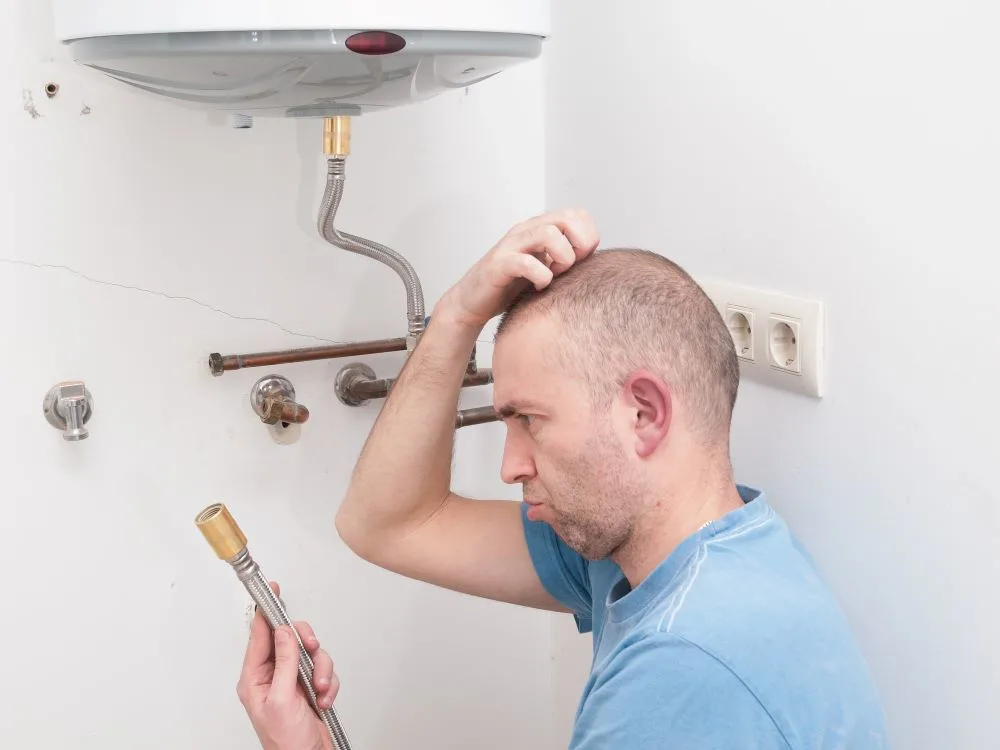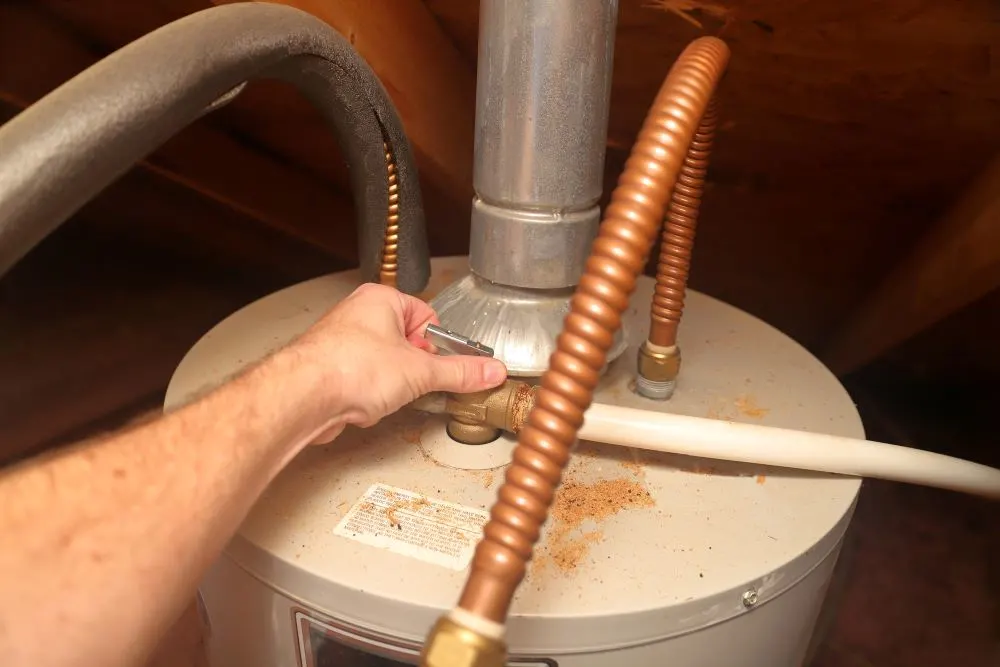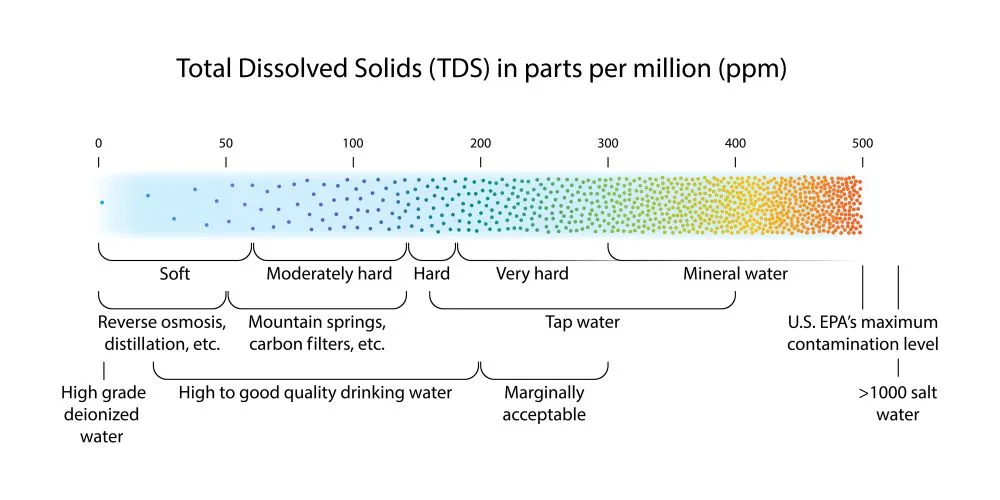Glass-lined water heaters are, by far, the most common type of water heater with a storage tank. Stainless steel models have many excellent characteristics that make them, in theory, a better choice. However, in choosing a stainless steel unit, you do also give up some advantages that the glass-lined versions provide.
We will look at everything these heaters have in common and how they differ from each other. You will see their advantages and disadvantages and will be able to choose between them more easily. Let’s look at how do these heaters compare!

Glass-lined heaters are more affordable and widely available. These are often deciding factors, making glass-lined heaters a good choice in normal situations. Stainless steel units are better for extreme situations; they are lighter, easier to maintain, more durable, and corrosion-resistant (no anode rod).
Stainless Steel Water Heaters Are Lighter
Stainless steel water heaters are lighter than glass-lined ones because the material itself is thinner, and they don’t have any additional lining.
You will appreciate their lightweight material, especially if you are planning to move and take the heater with you or if you have a long transport ahead of you (lighter load means less fuel used).
Their weight is also advantageous if you are going to install the heater by yourself, as a heavy heater would require multiple people to be lifted and installed.
The exact weight of the heater will, of course, also depend on the size of the tank. For comparison, an empty 40-gallon stainless steel heater’s average empty weight is only 90 lbs, while a 40-gallon glass-lined heater weighs around 110-140 lbs. That’s a significant difference!
The weight difference is not a linear or uniform ratio. In the above example, the difference was about 100 lbs. But let’s look at another sized tank. An 80-gallon stainless steel tank can weigh as little as 151 lbs, while the same size glass-lined heaters typically weigh anywhere from 300 up to 600 lbs (both empty weights). This is a difference of 150-400 lbs!
Glass-Lined Water Heaters Need Anode Rods
Anode rods are not essential to the daily functioning of water heaters. However, they are vital to the continued functioning of certain water heaters.
Glass-lined water heaters are prone to corrosion, even though they are lined in unreactive glass, and in order to protect them, you need to install an anode rod. A sacrificial anode rod depletes over time, and therefore it needs to be replaced regularly. This impacts the cost of maintenance of the glass-lined water heaters.
Stainless steel water heaters are much less demanding and less costly to maintain compared to their glass-lined counterparts. The reason behind it is that they are naturally corrosion-resistant, and thus, they don’t require an anode rod.
How Do Anode Rods Work?
We can divide the anode rods into two categories: sacrificial anode rods and powered anode rods. Both types are meant to protect the water tank from corroding, but each goes around serving this purpose in a different way.

The sacrificial anode is made of metals like magnesium, aluminum, or zinc. It works on the principle that these metals are more responsive to the corrosive elements in the water than the water tank itself is.
As a result, the anode rod starts deteriorating first. As long as there is an anode rod in the heater, the corrosive elements will focus on it. Thus the corrosion will occur on the rod instead of the water tank.
The powered anode is typically made of highly durable metal like titanium, and it generally is permanent. It does not deplete itself in order to protect the water tank. Instead, it is plugged and uses power to send out electrical pulses that stop corrosive processes and neutralize smell-causing bacteria.
Why Glass-Lined Heaters Need Anode Rods
Glass lining is not perfect protection against corrosion. Even when it is combined with a pressure relief valve, it still needs one extra line of protection, which is the anode rod.
But why is the glass lining not sufficient enough to preserve the water heater on its own?
Sooner or later, the glass lining begins to split and crack, allowing the water to get in direct contact with the metal material of the tank. At that moment, only the anode rod can keep the corrosive elements in the water from causing the heater tank to rust.
Stainless Steel Water Heaters Don’t Need Anode Rods
Stainless steel water heaters are naturally corrosion-resistant because they have a thin film protecting them. Imagine the film as a thin barrier that inhibits water and oxygen from accessing the surface beneath it, therefore preventing the surface from rusting.
Stainless steel consists of various reactive elements (with chromium being one of the more important ones) that together create this thin armor against rust.
The material’s natural resistance makes stainless steel water heaters more durable, stronger, and easier to maintain since you don’t need to keep an eye on or replace any anode rods.
Thanks to these features, they tend to come with a longer warranty than glass-lined heaters, and typically at no significant extra cost. The lack of rods also helps you save some money in the long run.
Durability of Stainless Steel and Glass-Lined Heaters
Glass-lined water heaters are not as durable as stainless steel ones. Their durability rests on the anode rod to a large extent.
Without an anode rod, the water heater typically lasts only around 5 years, but it may be as few as 3 years or as many as 8, depending on many different factors.
As we mentioned before, sacrificial anodes need to be replaced every few years. But it is ultimately better to have a worn-out anode rod and not replace it than to have no rod at all.

The heater with an old anode rod can last, at best, from 8 to 10 years. If you regularly change the sacrificial anode, your glass-lined heater could last anywhere between 10-15 years.
Stainless steel water heaters usually come with a warranty of 12 years, but you can expect them to last even much longer than 15 years. But it is not only their long lifespan that makes stainless steel heaters more desirable. They are more durable overall.
Glass-lined heaters are more susceptible to damage during transportation, installation, and later during operation, as the glass-lining cracks easily. While glass-lined heaters can only handle temperatures up to 120 °F-140 °F, the stainless steel heaters have no problem withstanding 180 °F with ease.
This factor may not be too relevant since you are not likely to shower in water at the highest temperature, but it goes to show that stainless steel can handle more stress in general.
It is good to remember that not all heaters are created equal, even if they happen to be from the same material.
There are different grades when it comes to stainless steel, and each one will perform differently. Same as each glass-lined heater will be different depending on the quality of the materials that were used in its manufacturing.
Durability Dependent on Water Quality
From the plethora of factors that influence the durability of water heaters, the water quality itself is perhaps the most determining element. The heaters will have a shorter lifespan in areas where the water is hard. Why?
Hard water contains many mineral components that build up in the heater and negatively affect the heater’s efficiency.
Even if you have soft water, you won’t be able to completely avoid mineral build-up because there is still some mineral content present in the water. However, the build-up will be significantly smaller, and it won’t affect the durability of the water heater as negatively as hard water would.

Here, it is important to understand that having soft water is not the same as having softened water. Added softeners (sodium) cause the anode rods to deplete more quickly, so you need to be careful not to oversoften your water.
All this applies to both glass-lining and stainless steel water heaters, although it affects the glass-lined heaters more. You see, the sediment speeds up the corrosion process, which will primarily impact glass-lined heaters.
But it can also make both types of heaters work less effectively or clog the pressure relief valve, which is crucial in preventing the heater tank from bursting.
There is only one way to prevent the mineral build-up from causing any damage—proper maintenance, which brings me to my next point.
Maintenance of Water Heaters
The care required for stainless steel heaters differs widely from the care necessary for glass-lined heater tanks. But they have a few steps in common, so let’s cover those first.
Flushing the tank is an important part of maintaining a water heater tank, regardless of what material it is made of. Some more expensive heaters have a build-in self-flushing feature, but you will have to handle the flushing yourself on cheaper models.
The next important step is to ensure that the pressure relief valve is working well, as it is an important safety feature. It is also good to set the temperature to no more than 120 °F. To learn how to do this, watch the video below.
This is pretty much all when it comes to maintaining a stainless steel heater. Now let’s move on to the glass-lined ones.
Extra Maintenance for Glass-Lined Heaters
The vital part of caring for these heaters is the replacement of their sacrificial anode rods. This step is essential because nothing would be protecting the tank from corrosion if it weren’t for the anode rods.
The replacement needs to be done every 2-5 years, depending primarily on your water quality and the amount of water that runs through the heater tank on a daily basis.
Generally, it is good to check the anode rod at least once a year to see how much of it has deteriorated. If you notice that more than half of the rod is dissolved, it means it’s time for a new one.
At that moment, you have two options. You can either try to DIY or hire a plumber to replace the rod for you. You may ask why you would want to spend extra money for something you can easily do yourself?
Removing anode rod and installing a new one is not always as easy as it sounds. This process can be quite tricky and time-consuming if the anode is seized, which unfortunately is not a rare case.
You need to remain very careful so that you won’t damage the unit’s pressure relief valve or its other parts.
If you are a skilled DIY type of person and you feel up to the challenge, you can check out Tips to Remove a Seized Anode Rod and watch this video.
Market Availability
Stainless steel water heaters are not as common as glass-lined heaters. Therefore, they can be difficult to come around, and the variety of the available units is more limited.
It could easily happen that you won’t be able to find the exact type and size that you are looking to buy. Ultimately, it will cost you more time and money to find the precise heater that you are after.
Glass-lined heaters, on the other hand, are well established on the market. The manufacturers offer a variety of types, models, sizes, and features you can choose from.
Since these heaters are so readily available, they also come at different price points, providing an option for different kinds of customers to find a heater that would perfectly fit their needs as well as budget.
Stainless Steel or Glass-Lined: Comparing the Cost
Price can often be the determining factor when we are looking to purchase a new water heater. Since they are already a pretty significant expense, most people will try to factor this in and look for cheaper models.
Stainless steel heaters are supposed to be an investment that lasts for many years to come, and their price reflects that. They are significantly more expensive than glass-lined heaters.
That is not to say that there every glass-lined water heater is cheap. On the contrary, many premium glass-lined models cost around $2,000-3,000.
However, you can find an 80-gallon glass-lined heater for $1,000-1,500 and a 40-gallon one for $600-800, while an 80-gallon stainless steel heater usually starts at $2,000 and a 40-gallon one starts around $1,400.
Bottom line, stainless steel heaters tend to be more expensive because they are made of a pricier material. Still, the final cost will ultimately depend on the heater’s other features like its capacity, source of power, type of venting system, or whether it has a self-flushing system.
Cost May Be Countered by Durability
A pivotal question is, are you willing to pay more for a water heater if it means that it will be more durable and its lifespan and warranty will be significantly longer? The answer will likely depend on what exactly you expect from and intend to do with the heater.
Durability over cost type of thinking may pay off if you are building a new house and you are planning to live there for a long time or if you are planning to take the water heater with you once you decide to move. The lightness and resilience of the stainless steel tank would be a valuable feature in the moving scenario.
Another situation when durability can counter the price is if you are buying the heater for a place with difficult access (such as a cottage in the mountains) or a place you are renting out. In that case, you are probably trying to avoid needing heater replacement, or you simply couldn’t be bothered with the regular maintenance.
On the other hand, if you move often or you are a frequent traveler who lives alone, you will probably be satisfied with a quality glass-lined heater.
Factor in the Cost of Anode Rods
Let’s not forget that even though a glass-lined heater on its own is generally cheaper to purchase, it is more financially expensive to maintain.
A good sacrificial anode rod costs about $40-50, and it needs to be replaced every 5 years, which is the average time the rods tend to last. You would need at least 3 of them for a heater with a lifespan of 15 years. That makes $150 spent on anode rods alone.
Not everyone has enough DIY experience to replace the rod themselves. So another potential expense to consider is the cost of having it replaced by a professional. A typical price that a plumber may charge you is around $200.
Counting all that up makes it seem like the stainless steel heaters are not that much more expensive after all. In some cases, they might even work out to be cheaper in the long run.
Summary of the Pros and Cons
Glass-Lined Water Heaters
Pros
- Resistant to rusting when they have an anode rod.
- Widely available in different models and sizes.
- They are more affordable than the stainless steel ones.
Cons
- The rods need to get replaced every few years.
- They aren’t as durable as stainless steel heaters.
- Glass-lining is fragile and heavy.
Stainless Steel Water Heaters
Pros
- They have a long lifespan.
- Easier and cheaper to maintain.
- They are naturally rust-resistant (no anode rods required).
- Stainless steel is very lightweight but still resilient.
Cons
- More expensive.
- They are not very common on the market, so it can be hard to find the exact type of heater that you want.
Final Verdict
Every person has different needs and preferences regarding their water heater. While stainless steel heaters can be the winner on paper, some people might benefit more from glass-lined heaters.
They are perfectly functional, manageable, and durable for the average person. More importantly, they are the readily available and more affordable option for the most part.
Stainless steel heaters are perfect for extreme situations. When a long and challenging transport is required, the water is very hard, acidic, or when you are looking for the most extended warranty and lifespan, stainless steel is the material that will better suit your needs.
Sources
https://www.nachi.org/lifespan-water-heater.htm
https://www.scientificamerican.com/article/why-doesnt-stainless-stee/
https://www.hpacmag.com/features/stainless-steel-water-heaters/
https://www.cartersmyplumber.com/water-heater-repair-cost/
https://www.usawaterquality.org/how-much-does-a-water-heater-weigh/#Water_Heater_Type

